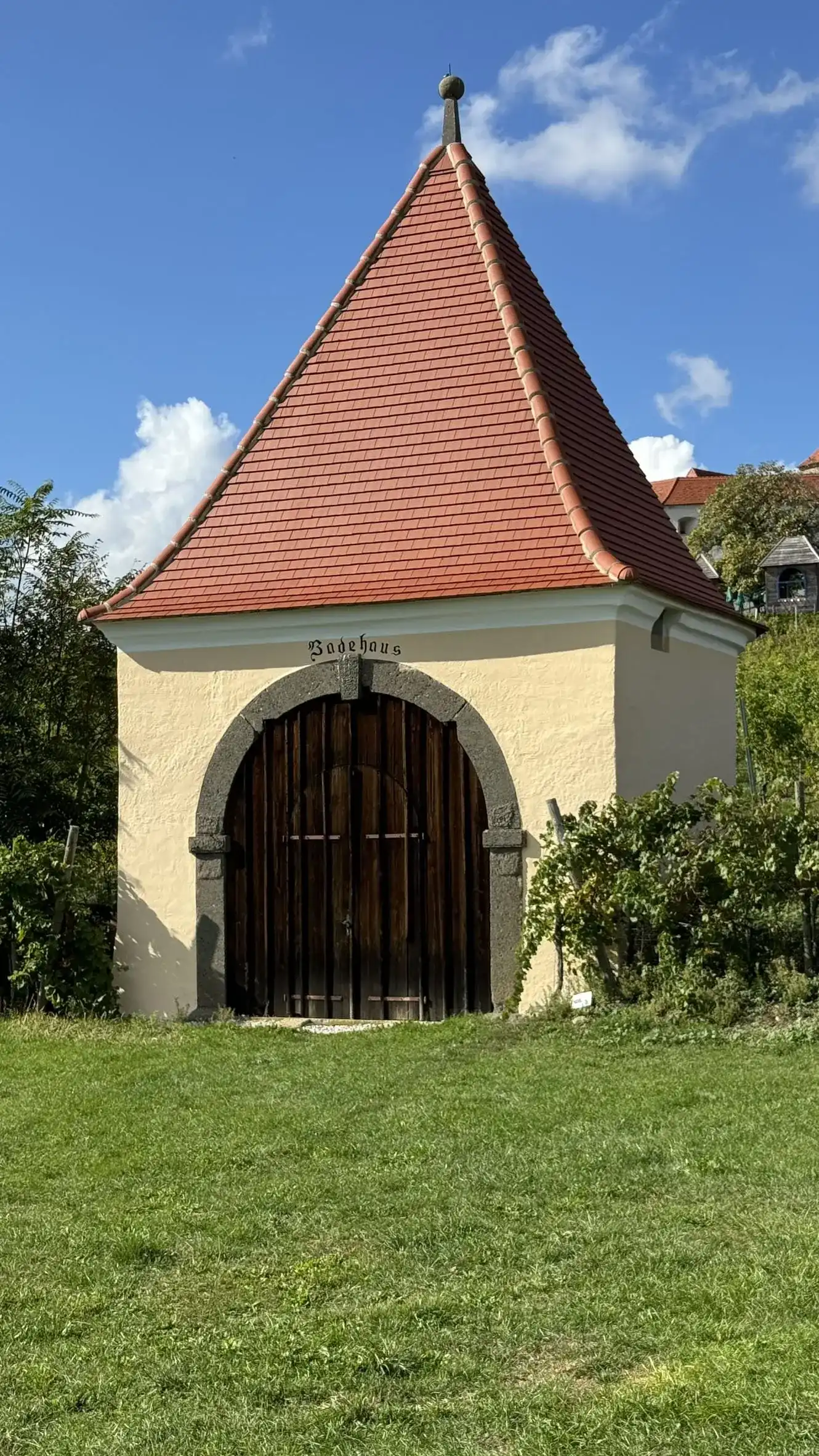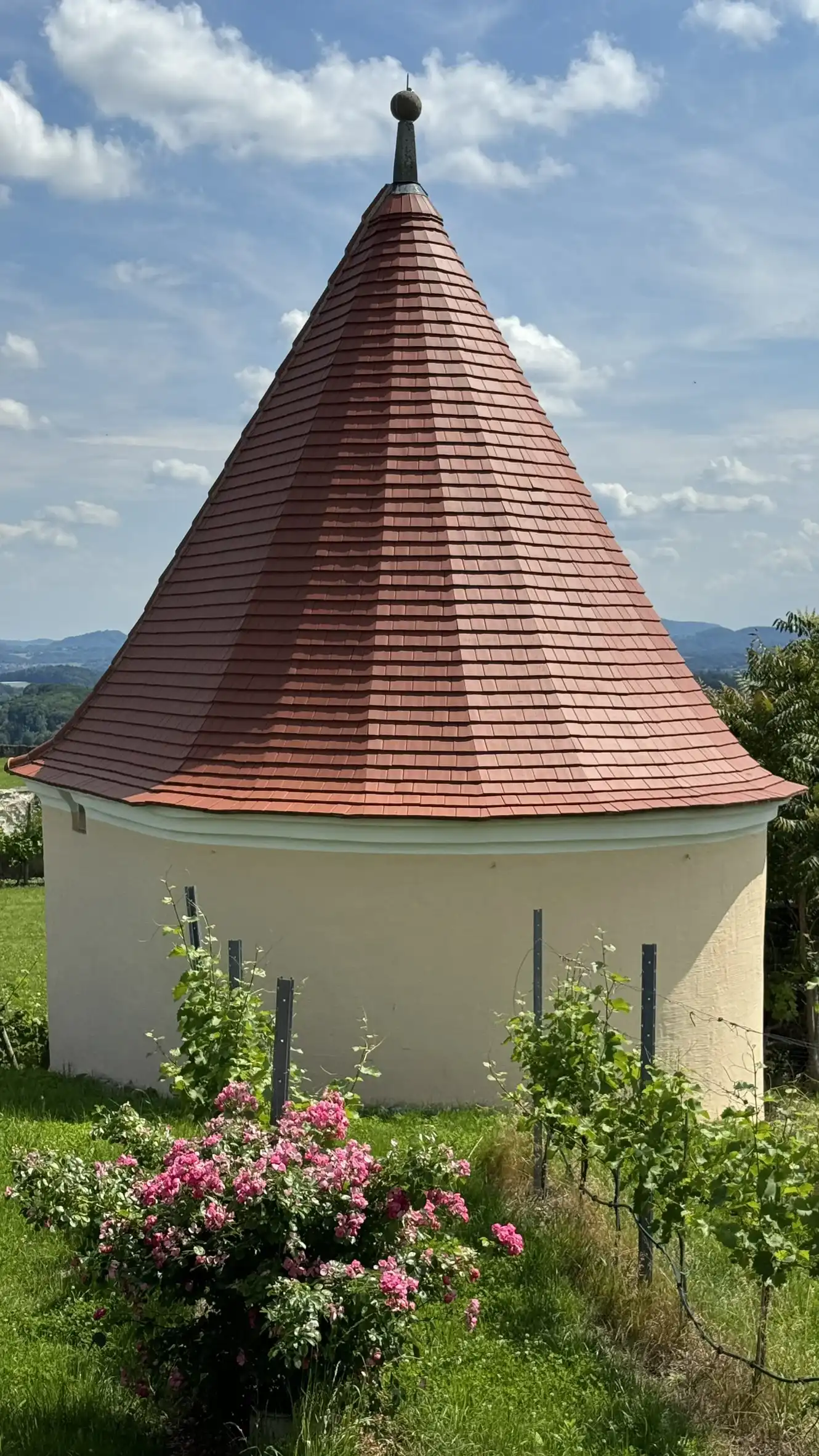Bathhouse
A magnificent gate once marked the entrance to an ornamental garden with its bathhouse.
In the 16th and 17th centuries, an ornamental garden with a fountain was within this enclosed square lawn. Water features (decorative water installations) were very fashionable and a symbol of noble status. They were operated by the pressure of water and gravity.
The two round towers were originally taller and had conical roofs. One of the towers housed a pit toilet (also called pit latrine or drop toilet).
The so-called “Gallerin’s Bathhouse” was constructed around 1600 as a grotto with a well. The interior walls were painted with exotic scenes.
The ceiling is formed by a corbelled stone vault. In this type of vaulted ceiling, the unhewn stones interlock and gain stability through the tension of the arched vault.
In 2013, lightning struck the roof of the bathhouse. As there was no obvious damage, this went unnoticed until the finial ball of the roof peak was found lying on the grass. The nails that were used to fasten the tiles had completely melted because of the high energy produced by the lightning strike.
Due to the newly established vineyards of the castle winery, emergency archaeological excavations were carried out on the site (in front of the bathhouse) in 1989/90.
Numerous findings confirmed that the castle hill had been inhabited for over 6,000 years.
Since 2007, this area has featured a display vineyard showcasing various grape varieties cultivated on the castle hill.


